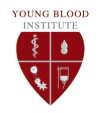|
I began my professional career with IBM Biomedical Systems, developer of the 2997 Blood Cell Separator, one of the world's first automated apheresis machines. Originally developed in partnership with the National Cancer Institute (NCI) at the National Institutes of Health (NIH) by an IBM engineer, George Judson, this device spawned a little known renaissance in blood component exchange, blood treatment therapies, and immunology, ultimately contributing to cancer programs, autoimmune disorders, and even AIDS research and treatment therapies. The automation of blood component collection and exchange also fundamentally improved the blood donation/collection industry, before then limited to whole blood collections and manual blood separation techniques. Today, we use the product descendants of the IBM blood cell separator to collect stem cells from bone marrow.
After IBM sold its Biomedical Systems business unit to COBE Laboratories, I went on to work in more traditional IBM marketing and development groups, and later spun some technologies out of IBM to found an imaging technology licensing company, Applied Science Fiction, which developed 100's of patents and licensable software and hardware designs. Since then, I’ve run a number of other tech companies, developed numerous products, licensed and sold technologies worldwide, and managed significant new technology initiatives. Now that I’m returning to my roots, as it were, I take comfort in the fact that not much has changed with apheresis equipment and procedures in 30 years, other than the natural evolution and refinement of those technical and medical breakthroughs of the 70's and 80's. Why? Because this historical evolution of apheresis equipment medical and best practices significantly reduces both technology risk and health/safety risk when re-focusing these evolutionary developments from rare and often niche conditions such as autoimmune disorders to the most significant challenge and opportunity we face as humankind: the natural autoimmunity of aging blood. We start from a solid foundation of long ago approved FDA (and international regulatory) procedures, decades of medical practice and experience, and an very low safety risk. In the field of immunology and blood science, progress has been evolutionary and episodic over the last 100 years, beginning with Karl Landsteiner's discovery of ABO blood types in 1900, a discovery which, in the hindsight of a 7 billion person population, may have saved 10's or even 100's of millions of lives over the last century. Now, when the world has begun to cite a new medical buzzword "immunotherapy" -- particularly for age-associated diseases -- we can look to the most natural and historically proven immune system therapy in the world: our own plasma, and a medical practice well honed for many decades.
1 Comment
Everett Van HOESEN
5/11/2019 01:13:58 pm
I was President of IBM’s System Supplies Division, home of the IBM Biomedical Systems Group, Today, I am alive because of apheresis Please contact me.
Reply
Leave a Reply. |
AuthorWrite something about yourself. No need to be fancy, just an overview. Archives
June 2024
Categories |

 RSS Feed
RSS Feed